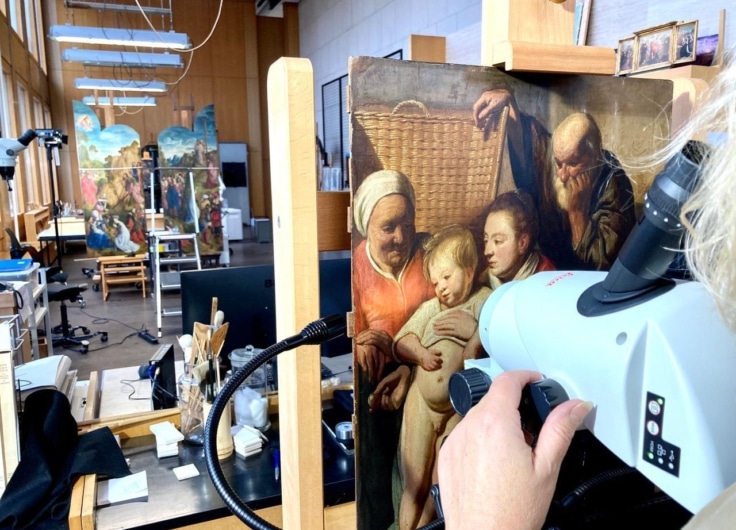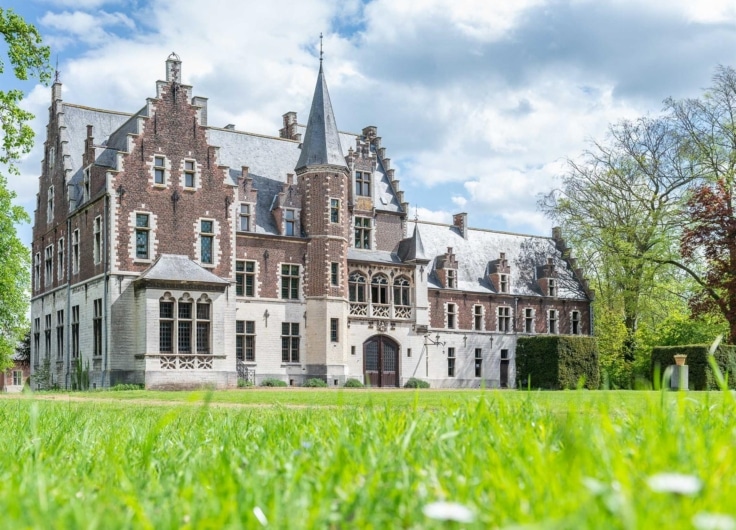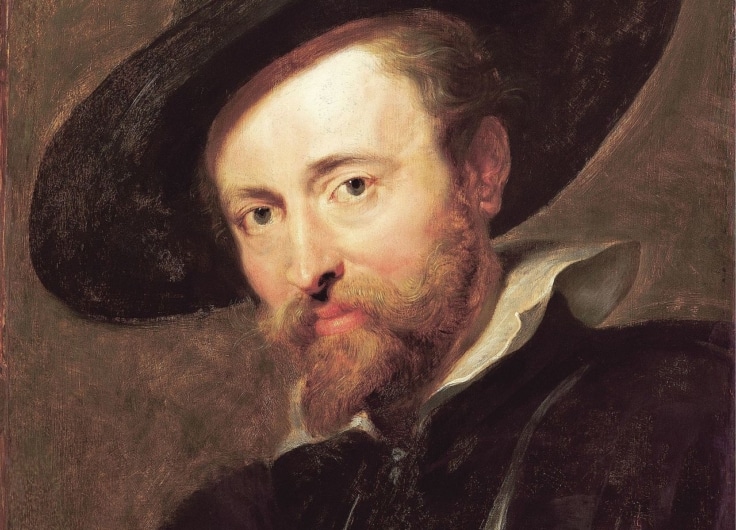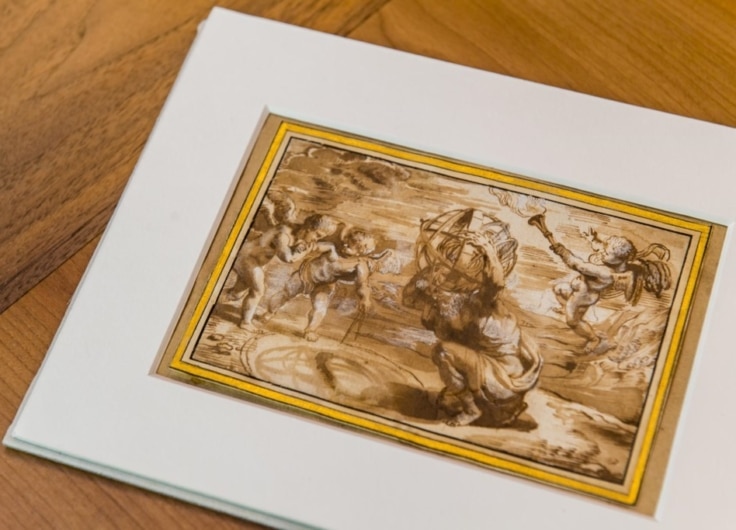In ‘Baroque Influencers’, Viewers Look Over Rubens’ Shoulder – Just as the Jesuits Did in the Past
The Antwerp Jesuits understood the art of persuasion. In the seventeenth century, they called on none other than Rubens to create a unique series of paintings. The three-part exhibition Baroque Influencers relays their story through a number of lost masterpieces.
The Saint Charles Borromeo Church is a pearl of the Baroque. Dating to 1621, it is fittingly one of the central venues of the city festival Baroque Influencers, which runs until the summer in Antwerp. A varied programme that includes exhibitions, lectures, concerts and other events, highlights the influence of the Baroque during the seventeenth century – especially the role played by the Jesuits.
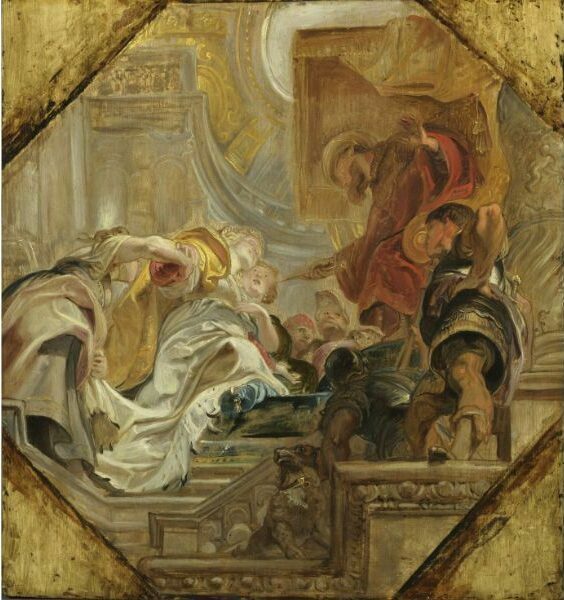 Peter Paul Rubens, Esther voor Ahasverus, 1620
Peter Paul Rubens, Esther voor Ahasverus, 1620© The Courtauld London / Samuel Courtauld Trust
The exhibition Jesuits, Rubens and the Art of Persuasion is at the core of the festival. It is not a single exhibition but consists of three parts held at three historic venues: in addition to the Saint Charles Borromeo Church, you can also visit the Snijders&Rockox House and the Nottebohm Hall of the Hendrik Conscience Heritage Library. Each venue has its own highlights, but the common thread is the strategic communication of the Jesuits, with special attention to how they used visual culture.
They tried to convince others of their insights in myriad ways: verbally, visually, through print, education or large-scale public rituals such as processions. Their aim was to strengthen the position of the Catholic faith and to defend the church against dissident religious voices. Jesuits, Baroque and Counter-Reformation are therefore often mentioned simultaneously.
Influencers
At the Saint Charles Borromeo Church, the Jesuits are presented as influencers with their following. In the seventeenth century (under the name Saint Ignatius Church), it was the main church of the Jesuits in Antwerp, where they used all means to convey the “true” faith. Outside, the facade captured the attention. Inside, there are compelling images and paintings, illuminated by a sophisticated play with light.
The Jesuits tried to convince others of their insights in myriad ways: verbally, visually, through print, education or large-scale public rituals
Although only the Maria Chapel is authentic, the interior of the church is breathtaking. It is possibly even more impressive when seen from the galleries where the exhibition is being held. Yet the beautiful venue with its abundant flow of daylight is hard to reconcile with the light-sensitive prints shown. Many display cases are therefore covered. When you lift the protective cloths, it’s like making personal discoveries.
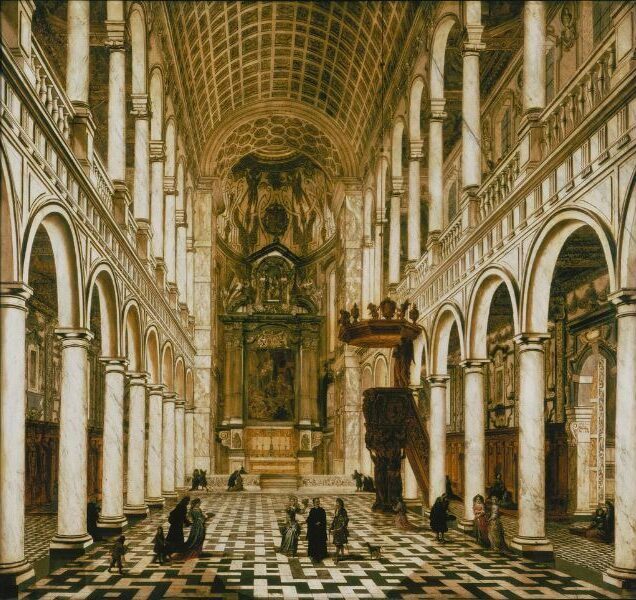 Wilhelm Schubert van Ehrenberg, Interior of the Jesuit Church in Antwerp, 1668
Wilhelm Schubert van Ehrenberg, Interior of the Jesuit Church in Antwerp, 1668© Collection City of Antwerp / Rubens House
Influencers need followers, and the Jesuits had them aplenty. Various categories are reviewed at the exhibition. In the first place, there were the novices, but there were also many laypersons who tried to reach the Jesuits in different ways. Men could become members of a sodality, a brotherhood focused on Marian worship with the objective of strengthening their personal faith and apostolic work.
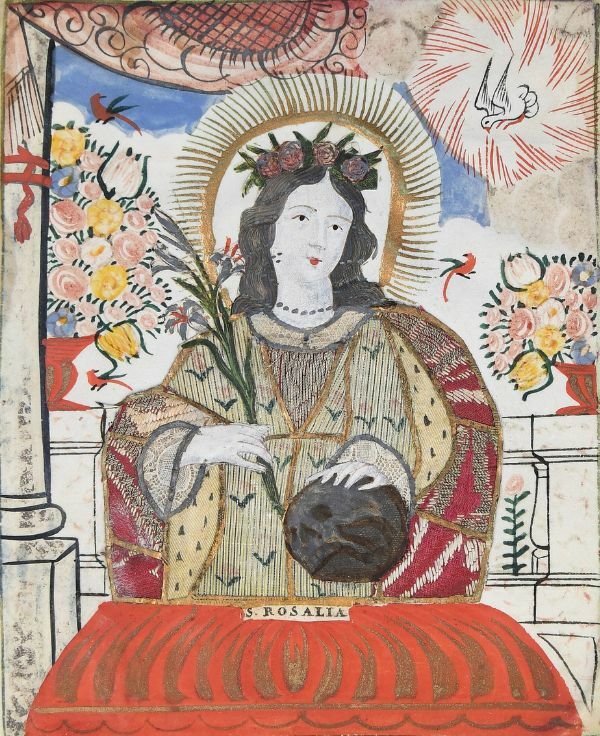 Anonymous, Saint Rosalia, 18th century
Anonymous, Saint Rosalia, 18th century© Antwerp / Ruusbroec Institute Library
For women, such a brotherhood was out of the question, but some became “spiritual daughters”. They had a close relationship with the Jesuit order and devoted themselves to teaching or caring for the sick. The world of followers, with their sodalities and spiritual daughters, is unfamiliar, something far removed from us. Also, in a literal sense, with missionary work in China being highlighted.
On home turf, the Jesuits tried to convert those of different faiths, such as Protestants. More obvious, of course, is the audience of children and their parents, whom the Jesuits reached through education. They had a tradition of school drama and produced adapted printed material modeled on profane books and richly illustrated.
Bringing back what was lost
Especially fascinating are ten lively paintings, recently recovered remnants of a temporary exhibition from 1640, when the Jesuit order celebrated their centenary. These affixiones (a series of hung emblems) were made for the Saint Charles Borromeo Church and are now being shown again for the first time.
The images, inscribed in Latin, refer to the religious vows, the duties of the order and the opposition it encountered. All of this is represented by angels in green landscapes. The paintings are easy to miss because they are shown from a very high position. They are best viewed from the opposite gallery.
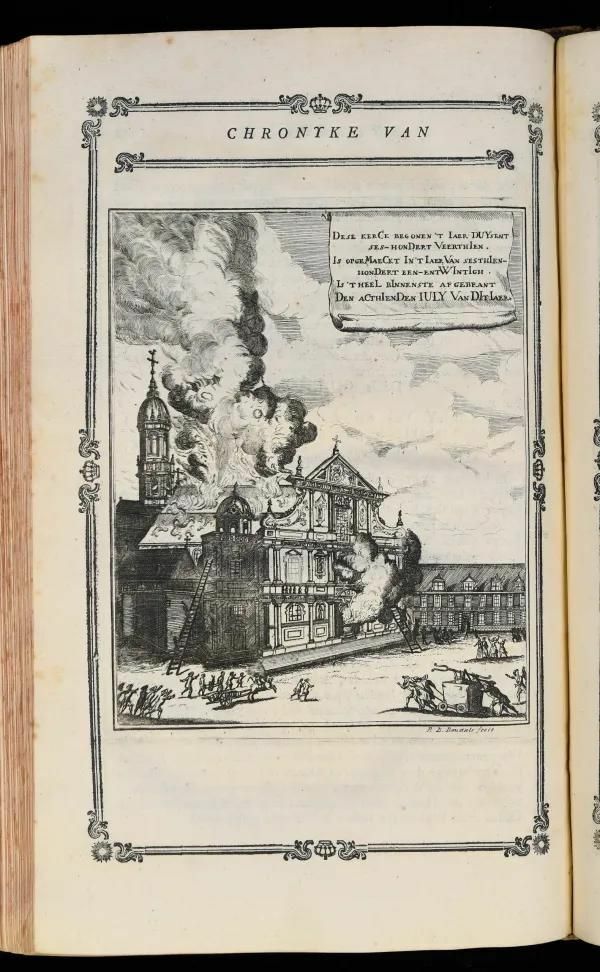 Petrus Balthasar Bouttats, Burning Church, ca. 1775
Petrus Balthasar Bouttats, Burning Church, ca. 1775© Collection City of Antwerp / Rubens House
But the undisputed masterpieces of the church in the seventeenth century were other paintings: a series of 39 ceiling paintings by Peter Paul Rubens that were destroyed in 1718 by a fire in the church caused by lightning. Twenty-one paintings of saints were lost along with 18 scenes from the Old and New Testament.
Contemporaries were full of praise, calling the splendour and glory of the church overwhelming, even a piece of heaven on earth, in the words of the Protestant theologian and pastor, Adam Samuel Hartmann. We certainly believe him.
The exhibition at the Snijders&Rockox House attempts to give an impression of these lost paintings. Because they were so famous at the time, this can be done through a detour of drawings by admirers. Both the German Christian Benjamin Müller and the Dutchman Jacob de Wit copied the paintings; in Müller’s case, just a few months before the fire of 1718.
Genius at work
Most interesting are Rubens’ oil paintings. These are small-scale models that were submitted to the Jesuits for approval before they could serve as a basis for the work in the studio. It is fascinating for visitors to compare the different versions. It’s as though you’re looking over Rubens’ shoulder.
He converted his first small designs in grisaille into larger and detailed oil sketches. The drawings of the admirers give an impression of the final result. Rubens’ sketches are exceptionally accurate, and it is fascinating to see the composition evolve in some cases. Perspective was especially challenging. After all, these were ceiling paintings which required a heightened perspective effect and drastic foreshortening.
Rubens’ sketches are exceptionally accurate, and it is fascinating to see the composition evolve in some cases
At the Snijders&Rockox House, you come face to face with the oil sketches that formed the foundation for this daring perspective. An enlarged photo on the ceiling helps to visualise the intended effect. It is exciting to see the genius at work from up close. The result must have been nothing short of spectacular.
At the third venue, the visitor is also asked to use their imagination. Once again, an exhibition has been built around something that is no longer there and can therefore no longer be shown. There used to be a Baroque chapel where the Nottebohm Hall of the Hendrik Conscience Heritage Library is now located. It was part of the building where the brotherhoods or sodalities established by the Jesuit order met. Painters such as Rubens or Anthony van Dyck were members of these brotherhoods, and they helped shape the interior with their paintings.
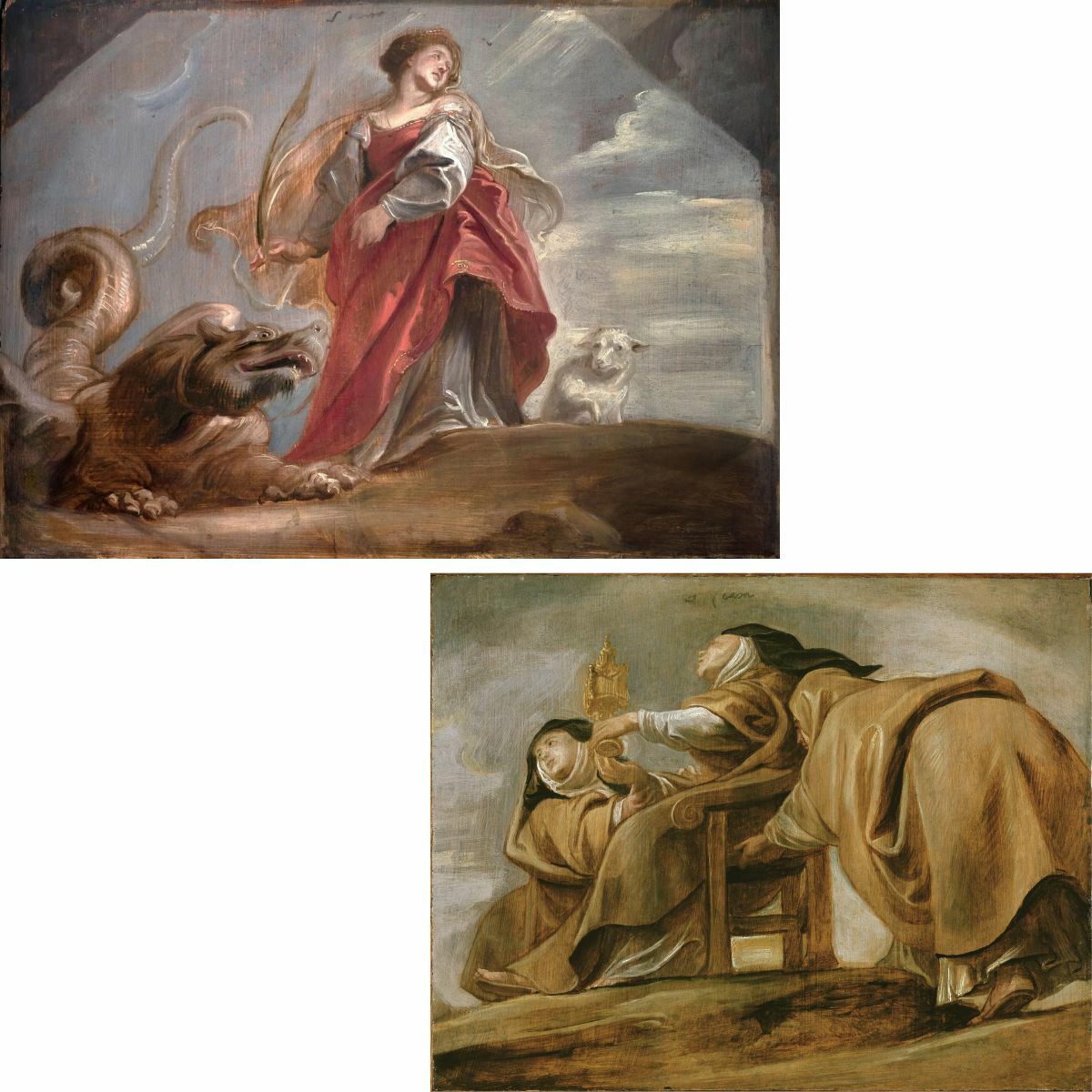 Two works by Rubens at the Museum Snijders&Rockoxhuis: Saint Margaret, c. 1620, and Saint Clara, 1620
Two works by Rubens at the Museum Snijders&Rockoxhuis: Saint Margaret, c. 1620, and Saint Clara, 1620© The Phoebus Foundation / Collection City of Antwerp / Rubens House
With only a few pieces, including a touch screen, the atmosphere and grandeur are evoked of the complete work of art that the chapel once was. In the no less magnificent decor of the Nottebohmzaal itself, this is a somewhat surprising experience. It is difficult not to get absorbed in the experience of the library room and, instead, focus on the seventeenth-century chapel.
Challenging
The three-part exhibition highlights many different facets of the communication strategies of the Jesuits and of their collaboration with Baroque artists. The connection is therefore not always obvious. The broad scope results in a demanding, oftentimes challenging exhibition. The large part of the ‘reconstruction’ (the ceiling paintings by Rubens, the chapel of the sodality in the Nottebohm Hall) also requires considerable effort.
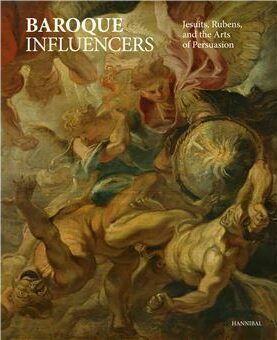
Fortunately, there is an accompanying catalogue in which everything is clearly brought together. The texts are written by the curators of the exhibitions, supplemented with in-depth essays by specialists affiliated with various universities and research institutions. To properly understand the three-part exhibition, the beautifully illustrated book is essential. Those who are willing to take their time are in for many marvellous discoveries.
Baroque Influencers. Saint Charles Borromeo Church, Hendrik Conscience Heritage Library and Snijders&Rockox House. Until 16 July 2023.
Baroque Influencers – Jesuits, Rubens, and the Arts of Persuasion,
Pierre Delsaerdt & Esther Van Thielen (eds.), Hannibal Books, 208 pages


